| Whilst at Scottsdale we took a side trip out along the Apache
trail into one of the more remote areas along the Salt River Valley. Here
the saguaro cactus are in their element. They only flourish in a relatively
small elevation range. | 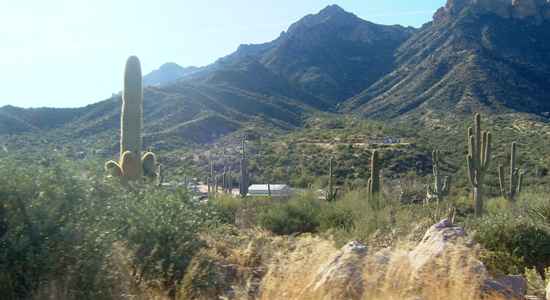 |
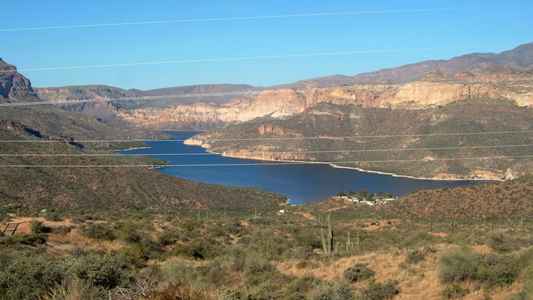 | The Salt River
flows down and through Tempe but up here it forms a number of lakes as a
result of the dams built to control the flow and create electricity. |
| The road is gravel and quite good as such roads go but I would
not have wanted to travel it in the camper. But the scenery was good and the
sky cloudless. | 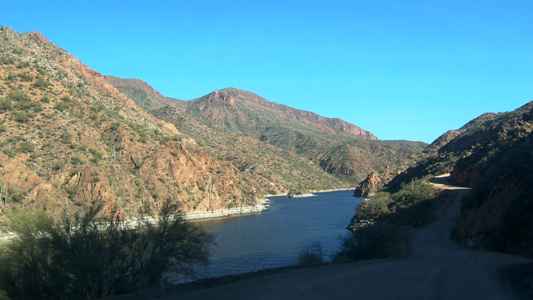 |
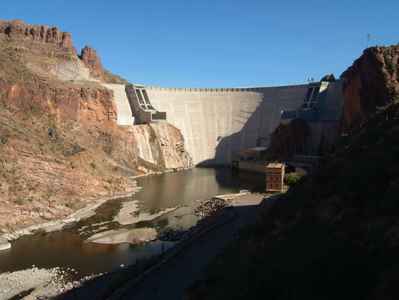 | Eventually we
reached the Theodore Roosevelt Dam, built in 1903-11 as one of the many
public works initiated by him. There was a town called Roosevelt which was
drowned by the lake. You can find out more at
http://www.usbr.gov/dataweb/dams/az10317.htm |
| The dam was raised by 77ft between 1989 and 1996 at a cost of
$410 million, consuming 450,000 cu yds of concrete and 849 miles of steel rod.
The generation plant produces 36MW and the lake stores 1.8 million
acre-feet of water. An acre-foot will provide for a family of four for a
year. | 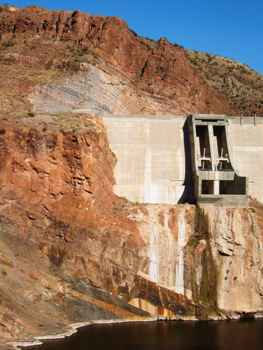 |
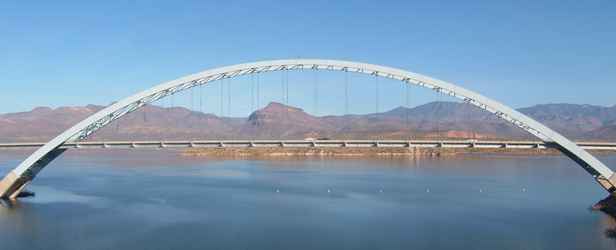 | This is one of
the top twelve bridges in the country and was built in 1987-90 to divert
traffic from the top of the Roosevelt dam to enable it to be raised. It is
1080ft long, is raised 300ft above the lake bed and cost $21.3 million to
build. |
| A bit further on lies the Tonto National Monument where there are some 700 year old
masonry dwellings of the Salado (Salt River) people. There are 19 rooms in a cliff cave
looking out over the lake and the cactus. Several other settlements existed in
the area. | 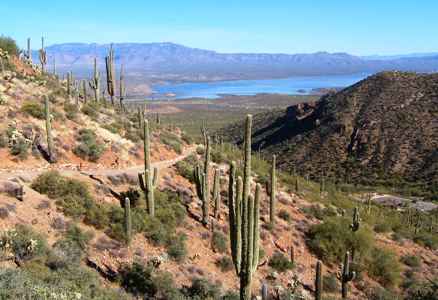 |
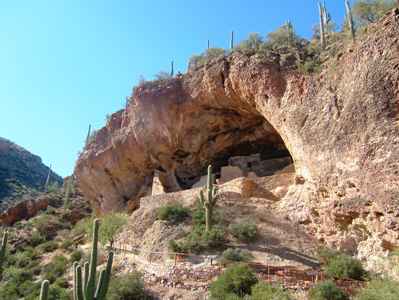 | There are two
caves but one is now rarely visited by the public because erosion has made it unsafe. This
is the lower cliff dwelling which had the view shown above. |
| Little remains except the walls and the doorways. The wooden
beams show how the roof and floors for the upper rooms were constructed. The
doorways are pretty small for us today. Probably the people too were smaller. | 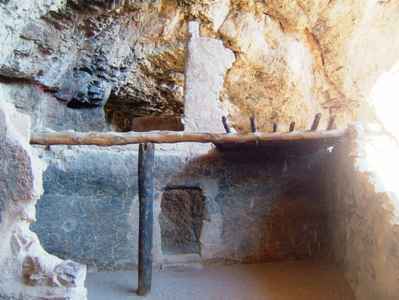 |
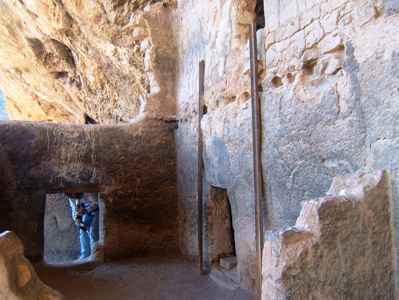 | Another shot of
the walls showing just how small those doorways are. |
| The only way in was up a ladder and when that was pulled up
behind you it looked very protected from both the weather and attackers. No
one knows why they left in the late 1300s but many people in the south west
disappeared at this time suggesting it may have been climatic. | 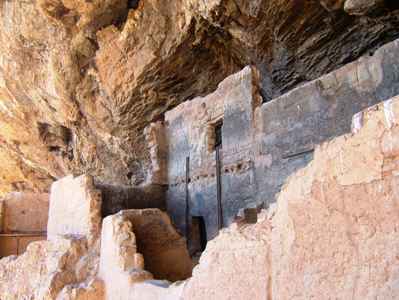 |
Just three of the cacti
types in the area showing how they cling to life in the most precarious of
conditions.| On the way back we passed this mine at a little place
called Miami. They are still mining copper here, on a fairly large scale and they feel it
is worth protecting with this fence. | 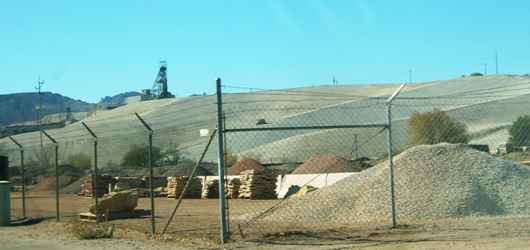 |
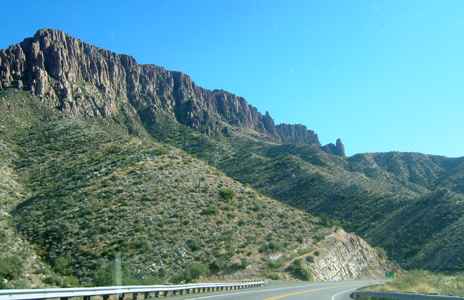 | The scenery is
pretty majestic particularly as the low angle of the sun starts to make
shadows and so bring it out in relief. |
|